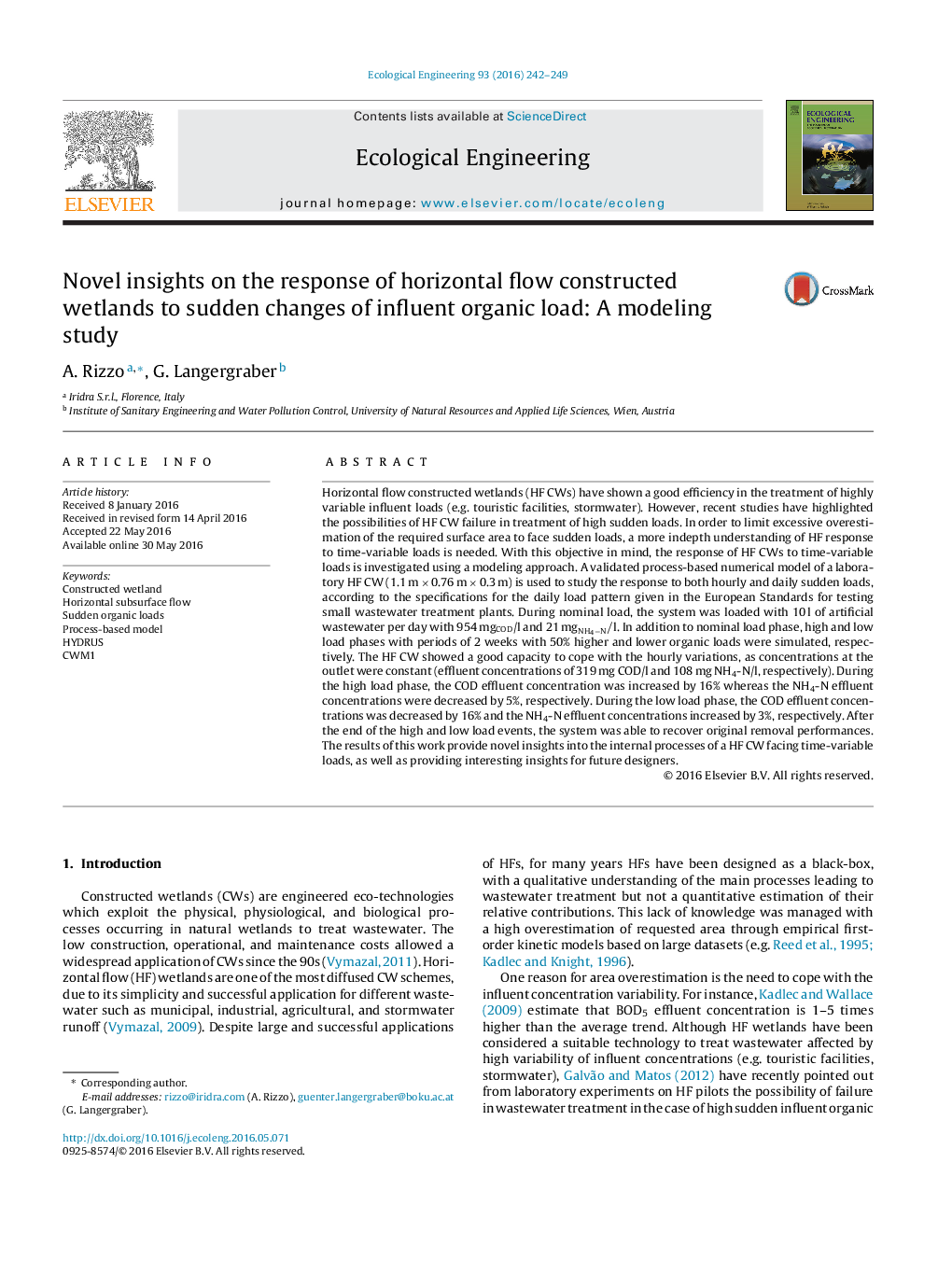| کد مقاله | کد نشریه | سال انتشار | مقاله انگلیسی | نسخه تمام متن |
|---|---|---|---|---|
| 4388734 | 1618006 | 2016 | 8 صفحه PDF | دانلود رایگان |
• HF CWs response to sudden loads is investigated with a modeling approach.
• Both hourly and daily influent load variations are tested.
• Hourly load variations are satisfactorily faced, with effects only near the inlet.
• High and low daily load variations show a good buffer capacity of the system.
• A deeper understanding of the HF CW response to time-variable load is achieved.
Horizontal flow constructed wetlands (HF CWs) have shown a good efficiency in the treatment of highly variable influent loads (e.g. touristic facilities, stormwater). However, recent studies have highlighted the possibilities of HF CW failure in treatment of high sudden loads. In order to limit excessive overestimation of the required surface area to face sudden loads, a more indepth understanding of HF response to time-variable loads is needed. With this objective in mind, the response of HF CWs to time-variable loads is investigated using a modeling approach. A validated process-based numerical model of a laboratory HF CW (1.1 m × 0.76 m × 0.3 m) is used to study the response to both hourly and daily sudden loads, according to the specifications for the daily load pattern given in the European Standards for testing small wastewater treatment plants. During nominal load, the system was loaded with 10 l of artificial wastewater per day with 954 mgCOD/l and 21 mgNH4−N/lmgNH4−N/l. In addition to nominal load phase, high and low load phases with periods of 2 weeks with 50% higher and lower organic loads were simulated, respectively. The HF CW showed a good capacity to cope with the hourly variations, as concentrations at the outlet were constant (effluent concentrations of 319 mg COD/l and 108 mg NH4-N/l, respectively). During the high load phase, the COD effluent concentration was increased by 16% whereas the NH4-N effluent concentrations were decreased by 5%, respectively. During the low load phase, the COD effluent concentrations was decreased by 16% and the NH4-N effluent concentrations increased by 3%, respectively. After the end of the high and low load events, the system was able to recover original removal performances. The results of this work provide novel insights into the internal processes of a HF CW facing time-variable loads, as well as providing interesting insights for future designers.
Journal: Ecological Engineering - Volume 93, August 2016, Pages 242–249
